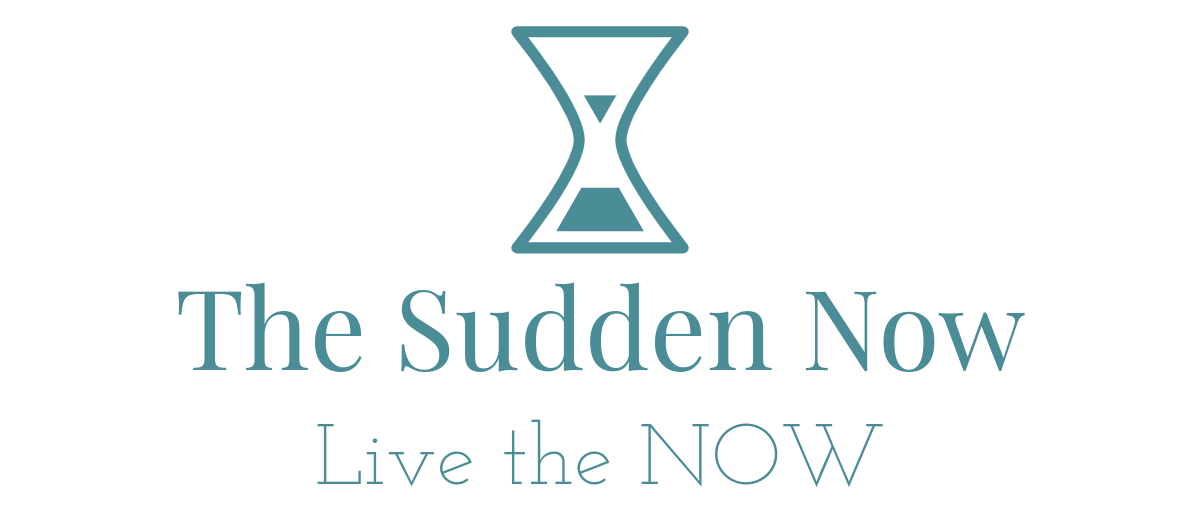Heading out the door? Read this article on the new Outside+ app available now on iOS devices for members! restorative yoga. Lingering in comfortable, supported poses has been scientifically shown to decrease stress and anxiety, mainstays of contemporary life that are correlated with an array of chronic illnesses.
Consider rest to be a rebellious disruption of your day and a quintessential form of self-care. Imagine a world in which we applied sustained discipline to our rest. What could that yoga lifestyle look like?
See also: Why Restorative Yoga is the Most Advanced Practice
A restorative yoga practice to construct rest
For this restorative practice, you will need 3 blankets, 2 blocks, and 1 bolster—or any combination of blankets and pillows and stacks of books. Arrange your props within reach of your mat. I wear socks and long sleeves when I practice restorative yoga, as the body temperature tends to lower when the parasympathetic nervous system takes over in the journey to deep rest.
It is so important for us to create rest over and over again to offset our busy and sometimes chaotic lives. In times that are difficult, and even when they’re easy, we need rest. I hope that you are able to construct rest with this restorative practice.
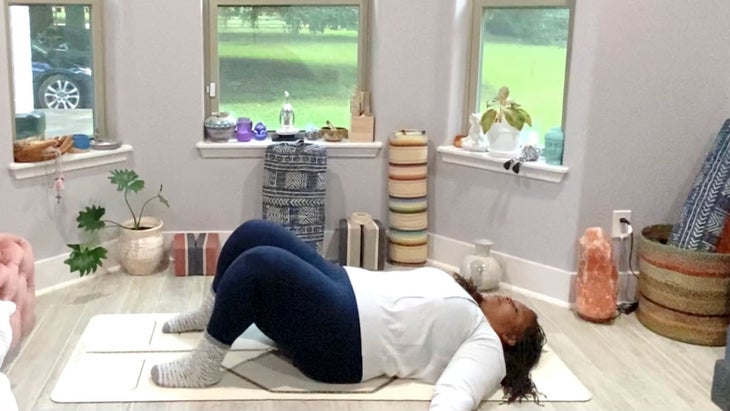
Constructive Rest
Set yourself up by lying on your back with your knees bent and the soles of your feet on the mat in Constructive Rest. As you ground and prepare for practice, bring your awareness to the natural rhythm of your breath and the support of the mat, the ground, the earth under you. Notice the rise and fall of your chest as you inhale and exhale. Allow yourself to drop into your practice. Remain here for 5 minutes.
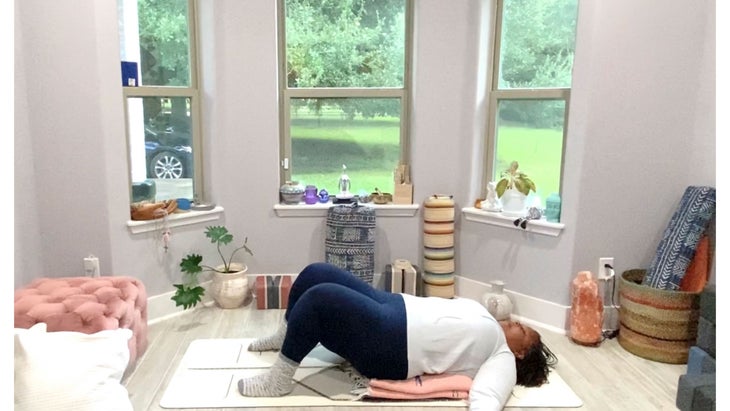
Blanket Backbend
From Constructive Rest, roll over to your side of choice. Take a moment here—let go of the need to rush. When you’re ready, press into your hands and start to lift yourself off. Let your head be the heaviest part of your body and the last part of you to lift. Fold 2 standard yoga blankets into rectangles. Place them on top of one another and smooth any wrinkles. (Blanket wrinkles can cause discomfort as your body rests more deeply into the pose.)
Come back to lying on your back but on top of the blankets with your soles of the feet on the mat. You want the blankets to support both your tailbone and the bottom edges of your shoulder blades. This will look like Constructive Rest but with blankets as support. Remain here for 7 minutes. (If you experience discomfort after allowing 3–4 minutes for your body to receive the pose, take away one blanket.)

Prone Twist
From Blanket Backbend, take your time as you roll over to your left side and slowly make your way up to seated. With your weight on your left hip, place a bolster and a blanket (or some pillows or folded blankets) where your torso and head were. You might want an incline to achieve a more comfortable version of this restorative twist as in the photo above. You can achieve this by sliding a block (or a small stack of books) beneath the far end of the bolster.
Bring your left hip as close as possible to the stack of props and frame the props with both hands. Lower yourself onto the bolster and blanket, adjusting for comfort and accommodation of your chest and soft tissues. Allow for your knees to stack or spread slightly with the option of placing a folded blanket or pillows between your knees, shins, and feet. Remain here for 7 minutes.
When you start to lift yourself to switch sides, come up slowly and luxuriously. Nothing is worth disturbing your ease.
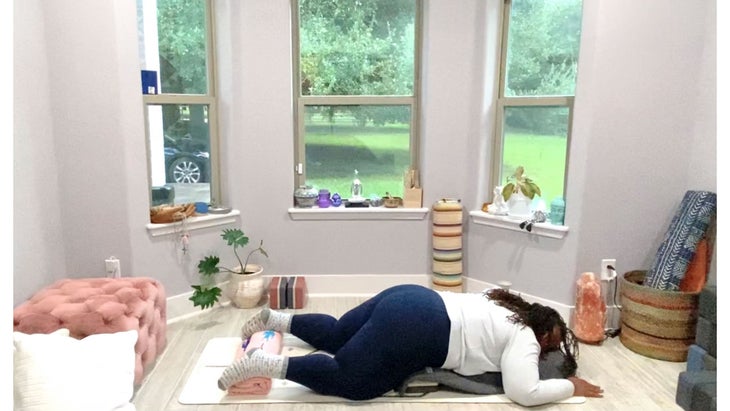
Supported Frog
From Prone Twist, ease your way up from the mat. Frog Pose isn’t usually called restorative, but there is, in fact, a wonderfully supported variation. Place a rolled blanket at the back of the mat—this will support your ankles. Use 2 blocks and a bolster to create an inverted letter T that will support your head, torso, and hips. To do this, place the blocks in the middle of your mat, on the lowest side, short edges alongside one another. Place a blanket over these props for comfort. Place the bolster perpendicular to the blocks and lengthwise down the mat to create the T. It’s important that your hips are a bit higher than your chest when lying down, so add a blanket under your hips if necessary.
From all fours, widen your knees to mat-width distance. Bring your ankles over the rolled blanket and lie down on the bolster and blocks: hip bones to blocks, soft tissue to soft cushions. Your legs will be slightly bent and externally rotated to create your restorative frog. Turn your head to one side. Remain here for 10 minutes.
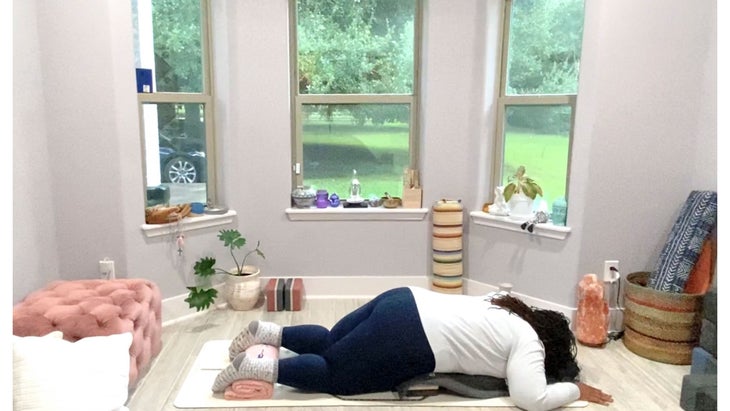
Belly Savasana
Belly Savasana is an incredible, yet often ignored, variation of Savasana that allows a release of the low back as your body succumbs to gravity. This is particularly enjoyable after a long or emotionally exhaustive day, and for those who have difficulty finding comfort in traditional Savasana.
The transition from Restorative Frog to Belly Savasana is full of ease. Simply bring your legs into neutral rotation so that your hips, knees, and ankles are all in line with one another. Turn your head to the other side. Stay for a while.
See also: A Yin Yoga Sequence for When You Feel Outrage
About our contributor
Tamika Caston-Miller is an E-RYT 500 with a special interest in yoga for renewal, transformation, and social justice. Her yoga journey began in 2001 with a home practice. She now holds certifications from YogaOne Studios, Yogaworks, Kripalu School of Yoga, Judith Hansen Lasater, and Paul Grilley. Tamika’s teaching and practice have been informed by chronic pain and injuries, the very human battle between shame and compassion, the quest for ancestral healing, and love for the practice and philosophy of yoga.
